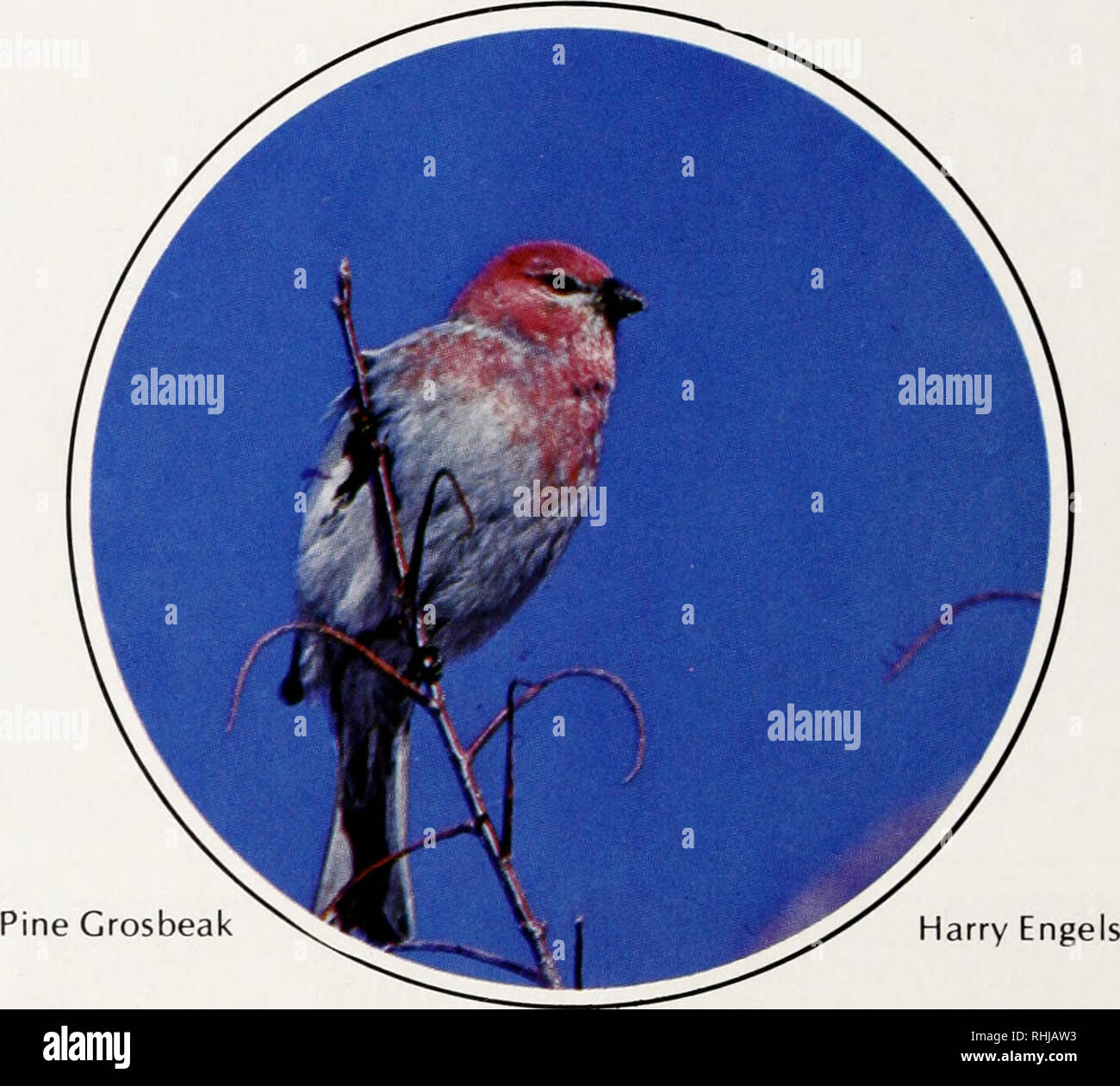. Birds of Yellowstone and Grand Teton National Parks. Birds; Birds. CASSIN'S FINCH (Carpodacus cassinii) The preferred habitat of the CassirTs finch is open forest and forest edge. A common breeding bird in both parks, the Cassin's finch has a varied, liquid, warbling song. The male Cassin's finch has a brilliant red crown patch which contrasts sharply with its brownish neck. Females have narrowly striped underparts, and both sexes have unusually long wings. Like other finches, this species has a short, stout bill adapted to seed- cracking. The food of this species consists primarily of seeds

Image details
Contributor:
Library Book Collection / Alamy Stock PhotoImage ID:
RHJAW3File size:
7.2 MB (329.2 KB Compressed download)Releases:
Model - no | Property - noDo I need a release?Dimensions:
1665 x 1501 px | 28.2 x 25.4 cm | 11.1 x 10 inches | 150dpiMore information:
This image is a public domain image, which means either that copyright has expired in the image or the copyright holder has waived their copyright. Alamy charges you a fee for access to the high resolution copy of the image.
This image could have imperfections as it’s either historical or reportage.
. Birds of Yellowstone and Grand Teton National Parks. Birds; Birds. CASSIN'S FINCH (Carpodacus cassinii) The preferred habitat of the CassirTs finch is open forest and forest edge. A common breeding bird in both parks, the Cassin's finch has a varied, liquid, warbling song. The male Cassin's finch has a brilliant red crown patch which contrasts sharply with its brownish neck. Females have narrowly striped underparts, and both sexes have unusually long wings. Like other finches, this species has a short, stout bill adapted to seed- cracking. The food of this species consists primarily of seeds, insects, and small fruits. Following pair formation in the spring, finches build a cup nest on the limb of a conifer and the female lays four or five blue, spotted eggs. In winter most Cassin's finches in Yellowstone and Grand Teton migrate to lower elevations outside the parks.. PINE GROSBEAK (Pinicola enucleator) The pine grosbeak is a relatively uncommon breeding bird of the conifer forests of Yellowstone and Grand Teton. The nest of this species is a loose cup in a low conifer branch along the edge of a stand of conifers. Our largest and one of our handsomest finches, the pine grosbeak is a hardy species with an attractive plumage and a beautiful song. Adult males have a rose-red plumage, while females and immature males are gray with a dull yellowish-tinged head and rump. Both sexes display distinct white wing bars. The powerful bill of this large finch is used to extract and crush pine seeds. The diet of this species also includes needle buds, fruits, berries, and an occasional insect. In flight the pine grosbeak has a deep, undulating flight pattern. 56. Please note that these images are extracted from scanned page images that may have been digitally enhanced for readability - coloration and appearance of these illustrations may not perfectly resemble the original work.. Follett, Dick; Yellowstone Library and Museum Association; United States. National Park Service. [Y